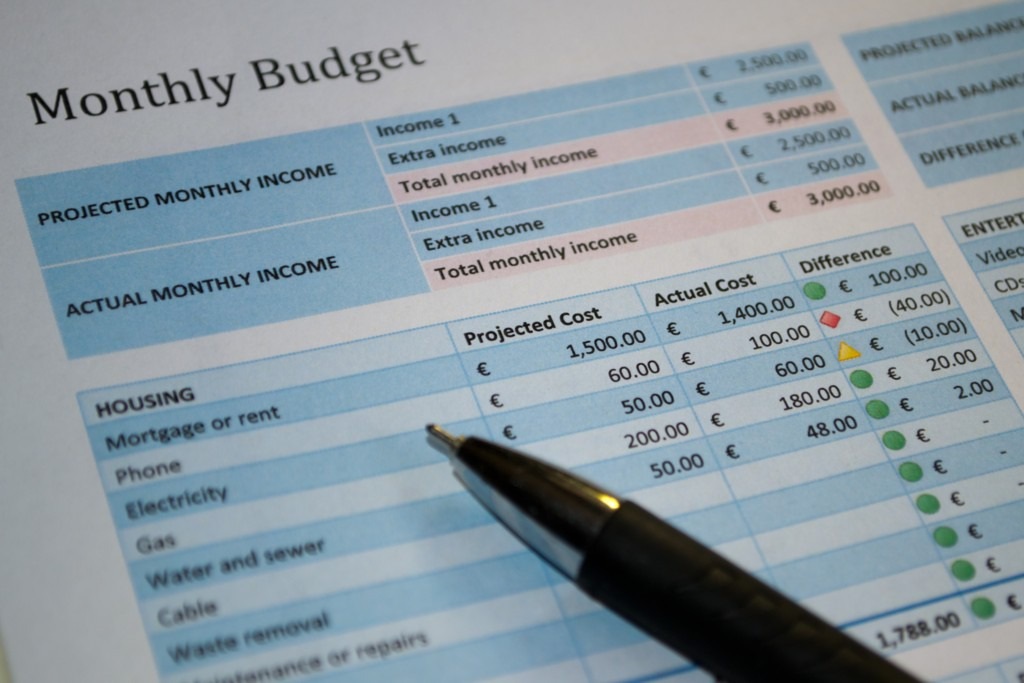It happens to us all, at some time or other, the moment when a major home appliance breaks down, or the car won’t start, and because of all that, an unexpected bill lurks on the horizon, ready to drain the family wallet and put the family finances in jeopardy.
With the cost of living rising month by month, everyone is feeling the pinch, no matter where you live, no matter what your circumstances are. Of course, some lucky people can simply shrug off these increases because their income more than pays for their lifestyle.
But in the main, families are having to budget more and more, to simply make ends meet and these days, it’s virtually impossible to get an advance on your next paycheck.
But what does budgeting really mean, and how does it work?
Well, the actual definition of budgeting is apparently ‘the process of calculating how much money you must earn or save during a particular period of time, and of planning how you will spend it’.
I would argue, it’s easier said than done in most households. More simply put, it’s just about making a plan, something to guide you, that is not restrictive, or set in stone, it simply keeps you on track with the family finances.
It shows you more easily where your money comes in from, and how it disappears and helps you gain some control over your spending because you can actually see on paper or a screen, your incomings and outgoings and can adjust accordingly.
There are some benefits to making your family budget on a screen, as there are lots of brilliant apps to help you keep a track of your money. On the other hand, if you want a visual that you can stick on the fridge door or family noticeboard, then good old-fashioned pen and paper will be the way to go.

Firstly list your income, which can be anything from your salary ( this should be your net income, after taxes and insurance), to any extra money from selling online, or side hustles, such as doing surveys online, or regular boot sales. If the hustles are only every now and then, or seasonal, then just take an average monthly figure that it brings in.
Then, and here’s the potentially depressing part, list all your monthly outgoings. Your bank statement is invaluable here, you cannot escape what is there in black and white.
Don’t forget to add in outgoings from every account you have. It’s no good just dealing with one account if you also pay for petrol, or takeaways from a different account. It IS all about the incomings and outgoings of the whole family finances, not just selected ones. It’s no good cheating, otherwise, the purpose of the exercise is futile.
Take a long hard look at the results of your monthly spending. It’s quite frightening sometimes to see how much that morning Cappucino on the way to work is costing you over a month. That gym membership? How many times have you actually made it to the gym in any given month, to justify the membership cost?
Takeaways are always a quick fix solution on nights when you can’t be bothered to cook, or haven’t got to the shops, but over the course of 4 weeks, the cost for a family of 4 might add up to a whole week’s worth of shopping to fill the fridge and freezer.
When you are budgeting, there are priorities to be taken into consideration over everything else. These are the ‘must haves’ if you like. You must pay for these things first to secure your well-being and peace of mind.
They are your home plus insurance to protect it, and your family, your food, your utilities, gas, electricity, water and council tax, and finally your transport which, gets you to work to earn your salary in the first place. These are non-negotiables and must come first.
Then you list all other regular monthly outgoings such as child care, dog walking, date nights, beauty treatments, playing golf, going to the game, cinema, newspapers, magazine subscriptions, etc.
You will begin to see a pattern forming. The monthly cost of your lifestyle may, or may not shock you. But once you are aware of where your money is going, you can begin to take control of it and work with what you have coming in a little better.
Here’s where your ‘plan’ or budget comes in. Depending on what’s left after you’ve subtracted your outgoings from your incoming money, you can decide if that gym membership is really worth it, and possibly cancel it altogether, and perhaps download a free copy of your favorite magazine, instead of paying in hard cash for the hard copy!
In short, with all the information at your fingertips, it’s much easier to make a budget and decide how much you want to attribute to non-essential items. You will become more in control of these outgoings and it won’t all be guesswork in the future.
The ideal thing is to make a new budget monthly, based on the previous month’s figures. You can adjust it to suit you, it’s not set in stone.
And if you should be lucky enough to have money to save, then, before you do that, add an emergency fund to your outgoings list, that you can dip into when the washing machine does finally stop spinning or the car really does need a new part.

